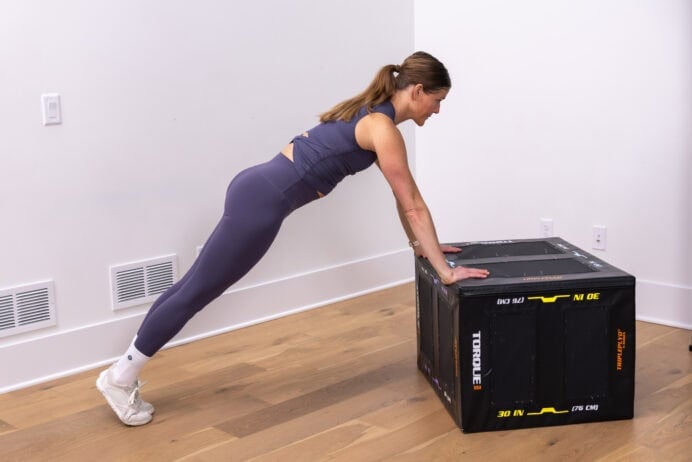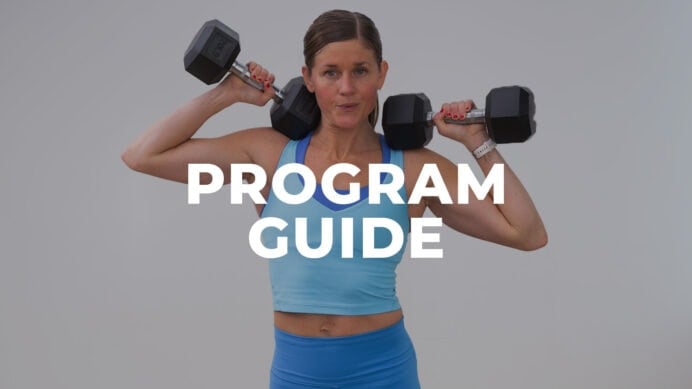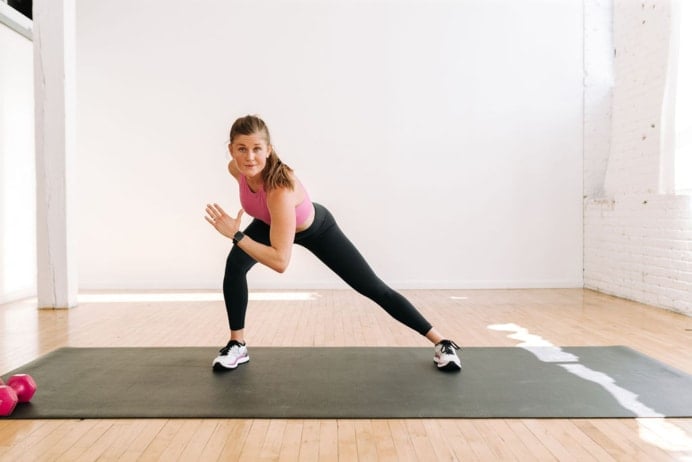
Endurance Training: How to Increase Endurance
Whether you’re just getting started on your fitness journey or you’re already crushing high-intensity workouts, endurance training is a key piece of a balanced routine. It builds your ability to sustain effort over time: whether that’s running a marathon, powering through a long workout or keeping up with life’s demands without fatigue.
Quick Links:
- Benefits
- Aerobic vs. Muscular Endurance
- Endurance vs. Stamina
- Various Methods
- How To Get Started
- When You’ll See Results
- FAQs
Endurance training is a structured workout strategy that teaches your body to sustain movement for longer periods at a given intensity. Endurance-building activities like jogging, cycling, bodyweight circuits, swimming and HIIT workouts challenge the cardiovascular and muscular systems to resist fatigue and perform over extended periods of time.
During endurance training, your heart rate and breathing rate are elevated for extended periods of time, with the goal of improving the efficiency of your heart, lungs and entire cardiovascular system.
I personally used to love training for and running marathons, and used that as my main form of endurance training for years. However, as my life has gotten busier, I’ve switched to more time-efficient and strength-focused forms of endurance training (like our fan-favorite pyramid workouts!).

Benefits
There are physical, mental and functional benefits of endurance training, including:
- Cardiovascular fitness. Lowers resting heart rate and blood pressure, improves circulation and oxygen delivery to muscles and strengthens the heart muscle.
- Resilience and mental fortitude. Releases endorphins, improves grit and focus through sustained effort and can help reduce anxiety and depression symptoms.
- Athletic performance. Delays fatigue, improves recovery, boosts aerobic and anaerobic systems and supports higher training volume.
- Healthy body composition. Burns calories, helps regulate hormones and insulin sensitivity and improves the body’s ability to burn fat.
- Functional fitness. Endurance training prepares you for real-life challenges, like carrying heavy bags through an airport or chasing after a toddler.
As a personal trainer, I’m fully aware of the physical benefits of endurance training. However, I’ve personally noticed the mental health benefits of endurance training the most. Mental resilience is one of the most powerful (and underrated) benefits of endurance training.
This type of extended physical activity trains you to practice being uncomfortable and builds resilience and self-trust when you persevere. You learn to build tolerance to physical and mental fatigue – a skill that directly transfers to real-life stressors like work or parenting.
Aerobic Endurance vs. Muscular Endurance
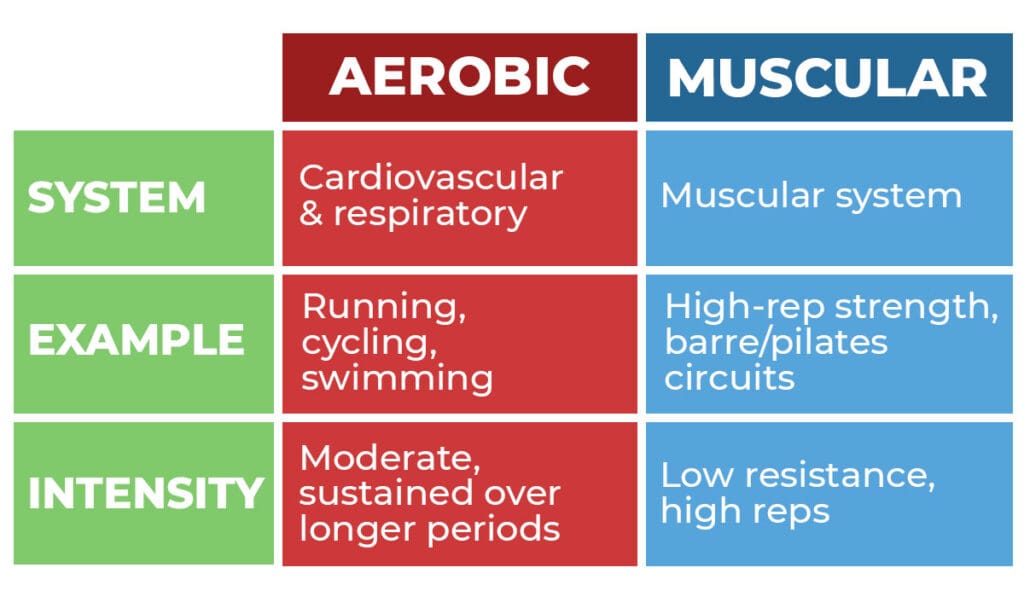
There are 2 types of endurance: muscular endurance and aerobic endurance. Both types of endurance training are important for well-rounded fitness and should be included in your weekly workout plan.
Aerobic endurance (also called cardiovascular endurance) is the ability of the heart and lungs to deliver oxygen to muscles. It focuses on the cardiovascular system and is built with continuous, repeated activities (such as running, cycling, rowing or swimming). Cardio is one type of endurance training, but strength training can also build endurance.
Muscular endurance is the body’s ability to repeatedly contract a muscle without fatiguing. It focuses on specific muscular systems and is built with high-rep strength work (such as bodyweight squats or barre/pilates with light handweights). Strength training, especially when done with minimal rest, can significantly improve muscular endurance.
There are some exercises that qualify as both an aerobic exercise and muscular endurance exercise. For example, kettlebell swings require both your lower-body muscles and your heart/lungs to work hard, improving overall endurance and conditioning.
Endurance vs. Stamina
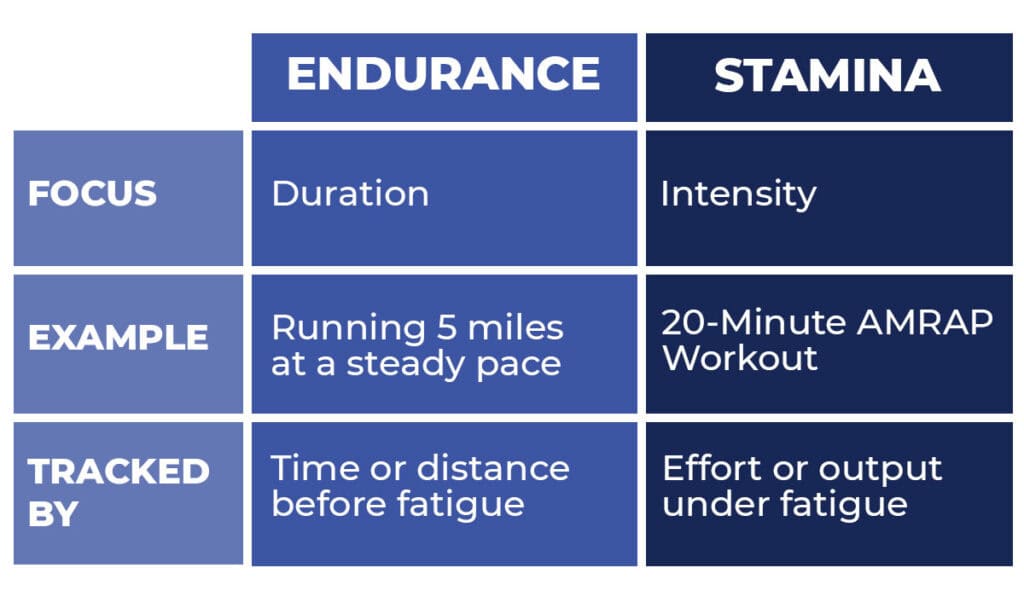
There is a slight difference between the terms “endurance” and “stamina,” although many people do use them interchangeably. Both endurance and stamina describe your ability to keep going without failing or quitting, but in slightly different ways.
Endurance emphasizes duration without fatigue, while stamina emphasizes intensity under fatigue.
For example, training for endurance may look like running 5 miles or biking at a steady pace for an hour. Whereas training for stamina may look like a 20-Minute AMRAP workout at a high power output, or running interval sprints. Stamina is about maximizing output, while endurance is about maximizing time.
While endurance is a measurable component of fitness, stamina is more of a side effect of getting fitter. You’ll know you’ve increased your endurance when you can run further distances. You feel you have increased your stamina when you’re not winded walking up the stairs, or can push through an intense workout. Stamina is the effect of improving your endurance, strength, mental resilience and overall fitness level.
Various Methods
There are multiple types and methods of endurance training, including:
- Continuous (steady-state) training. Long, moderate-intensity activity with no rest periods. Includes zone 2 cardio, cycling, jogging and hiking.
- Tempo/threshold training. Sustained work at “comfortably hard” pace (75-85% max heart rate). For example, a 20-minute run at a moderate pace without rest.
- Interval training. Alternating periods of high-intensity exercise and low-intensity rest. Includes things like high-intensity interval training workouts and walk/run intervals.
- Repetition training/speed work. Short bursts of all-out effort with full recovery between. For example, sprinting 100m, then fully recovering before repeating.
- Fartlek training (speed play). Unstructured mix of steady and sprint intervals. This includes things like adding a random sprint (for example, from one mailbox to the next) into a longer steady-pace run.
- Circuit training. A series of exercises performed in succession. Includes timed-interval circuits and rep-based circuits.
- Strength training. Reaching muscle fatigue through high reps of low-to-moderate weight. Popular examples include barre and pilates classes.
No one method is better than any of the rest; it just depends on your personal fitness and training goals.

How to Get Started
Endurance training is beneficial for everyone, from fitness beginners to advanced athletes. Your starting point will depend on your current fitness level, training background and personal goals.
Whether you’re a beginner or advanced, make sure to start your workout with a comprehensive warm-up and end with a full-body cool down to reduce risk of injury.
- Beginner: Focus on building a baseline aerobic fitness level with low-impact, steady-state movement such as walking, biking or bodyweight circuits.
- Intermediate: Improve aerobic capacity and build muscle endurance by introducing tempos and intervals.
- Advanced: Increase performance and athleticism by training across multiple intensity zones, including long-distance runs, speed work and circuit training.
The most popular form of endurance training is running, which also makes this form of exercise incredibly accessible. You don’t need any fancy equipment to get started; just your bodyweight.
Keep in mind that fueling your body with the right nutrients before, during and after your workouts is essential for building endurance. Focus on a balance of carbohydrates, protein and healthy fats to sustain energy and support muscle recovery.
Many people also benefit from a small dose of caffeine before a workout to enhance focus and performance. If you’re curious about whether coffee before a workout can actually improve your results, check out this guide on drinking coffee before a workout.
Example Exercises and Workouts
You don’t need to be a runner, cyclist or competitive endurance sports athlete to get the benefits of endurance training and achieve your fitness goals.
There are many bodyweight and minimal equipment exercises you can perform instead, including:
- Bodyweight squats
- Jumping jacks
- Mountain climbers
- High knees
- Reverse lunges
- Push-ups
- Jump rope
- Dumbbell thrusters
To create your own simple endurance training AMRAP circuit, set a timer for 20 minutes, then choose 5 of the exercises above and perform 10 reps of each exercise. Repeat as many rounds as possible (AMRAP) in 20 minutes.
If you prefer follow-along workout videos, these are some I love for building endurance:
- 30-Minute Full Body Circuit Workout
- 35-Minute Full Body HIIT Workout
- 50-Minute Resistance Training Pyramid
Frequency and Duration
You don’t need hours each week to improve your endurance levels. Even 1-2 sessions a week will improve heart health, increase stamina and improve conditioning levels.
- Beginner: Aim for 2-3 training sessions (15-20 minutes) per week. Keep intensity within the “talk-test,” or the ability to maintain conversation during work periods. I recommend starting with bodyweight exercises to learn proper form.
- Intermediate: Aim for 3-4 moderate training sessions (30-40 minutes) per week. You can begin shortening rest periods, and increasing intensity either through run distance, duration or workout formats like intervals, circuits and compound exercises.
- Advanced: Aim for 4-5 longer training sessions (30-60 minutes) per week. Strategically combine aerobic workouts with muscular-endurance strength workouts to maintain muscle. Workouts may include longer sets, circuits with minimal rest and heavier weights.
When You’ll Start to See Results
Progress takes time, consistency and patience, especially if you’re just starting out. Although they may not happen overnight, you can result to see results in
- Short-term (2-4 weeks): improved breathing control, lower resting heart rate, reduced muscle soreness after workouts, better sleep quality and increased energy levels.
- Long-term (6-12+ weeks): greater cardiovascular health, improved VO2-max levels, stronger joints, increased strength and endurance, improved muscle definition, and more stamina in daily life.
The most important thing is consistency: if you keep showing up, the results will follow. Our bodies are built to adapt, and endurance (more so than almost any other fitness measurement) rewards consistency over perfection.
FAQs
There are five heart rate “zones” which are based on a percentage of your maximum heart rate (MHR). To estimate your max heart rate, subtract your age from 220.
During endurance training, you typically want to be working in zone 2 (60-70% MHR), zone 3 (70-80% of MHR) and zone 4 (80-90% of MHR). I personally track my heart rate zone on my Garmin Venu 3s, but you could also use an Apple Watch or WHOOP activity tracker.
Like building muscle, progressive overload is a key component of increasing endurance. Over time, try adding 5-10% distance, duration or reps every 2-3 weeks. This ensures your workout continues to become more challenging as you build strength.
I also recommend following a hybrid cross-training plan, alternating runs with strength training to ensure a well-rounded training program and prevent injury. If better endurance is your goal, you might prioritize cardio. A balanced diet and rest and recovery are also important for supporting muscle adaptations. If you experience DOMS (delayed onset muscle soreness) from new activity, you may benefit from restorative practices like red light therapy or cold plunging.
Stay Consistent and You’ll Make Progress
Endurance training isn’t just for endurance athletes or those training for a triathlon. Whether you’re a mom looking for energy that lasts all day, a grandparent who wants to be able to keep up at the playground or a jetsetter hauling luggage cross-country, increased endurance performance means you’ll be able to do the things you love for longer. Start where you are and do what you can – you’ve got this!
Fitness Info
Fitness EducationPin This Article on Endurance Training











